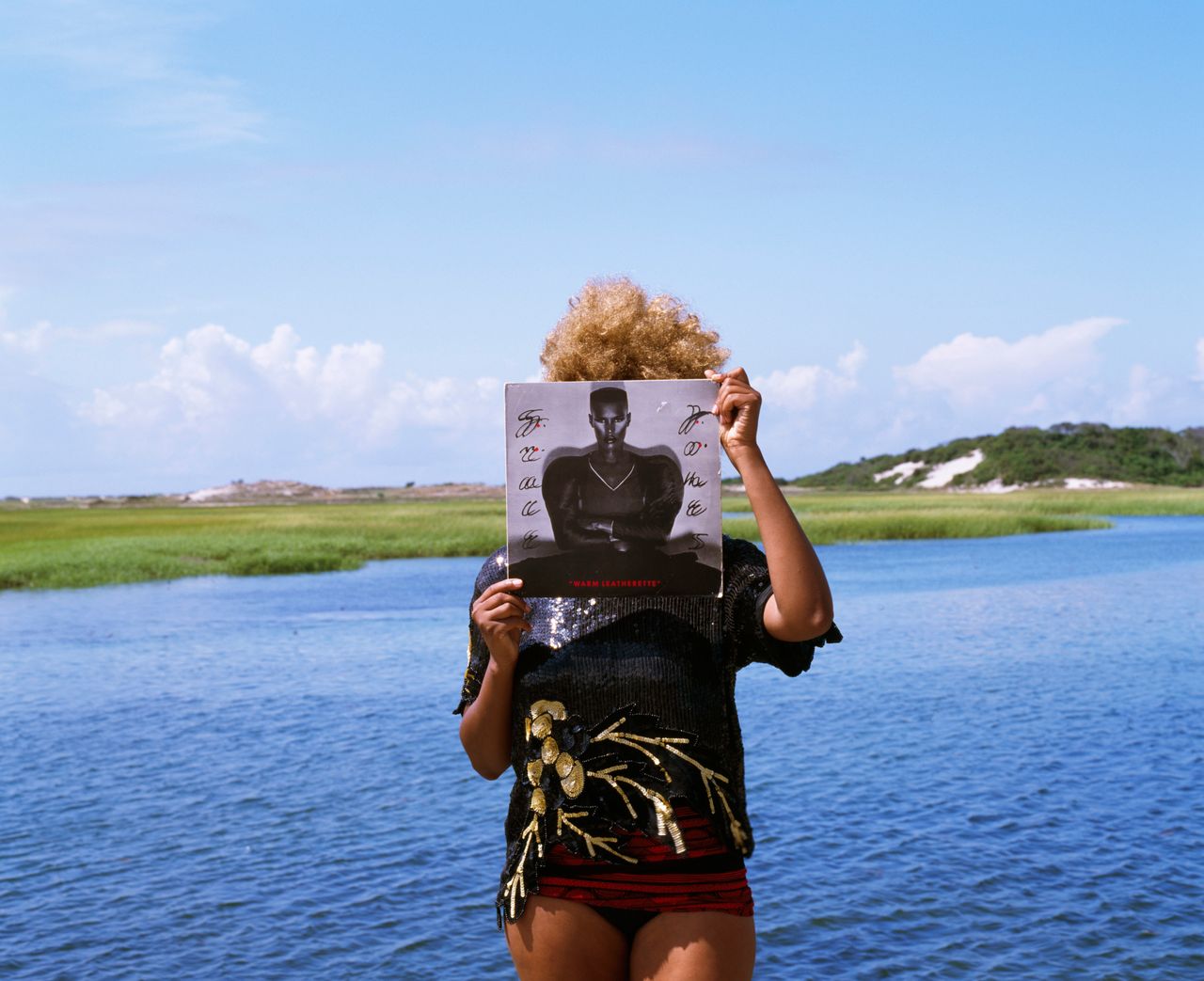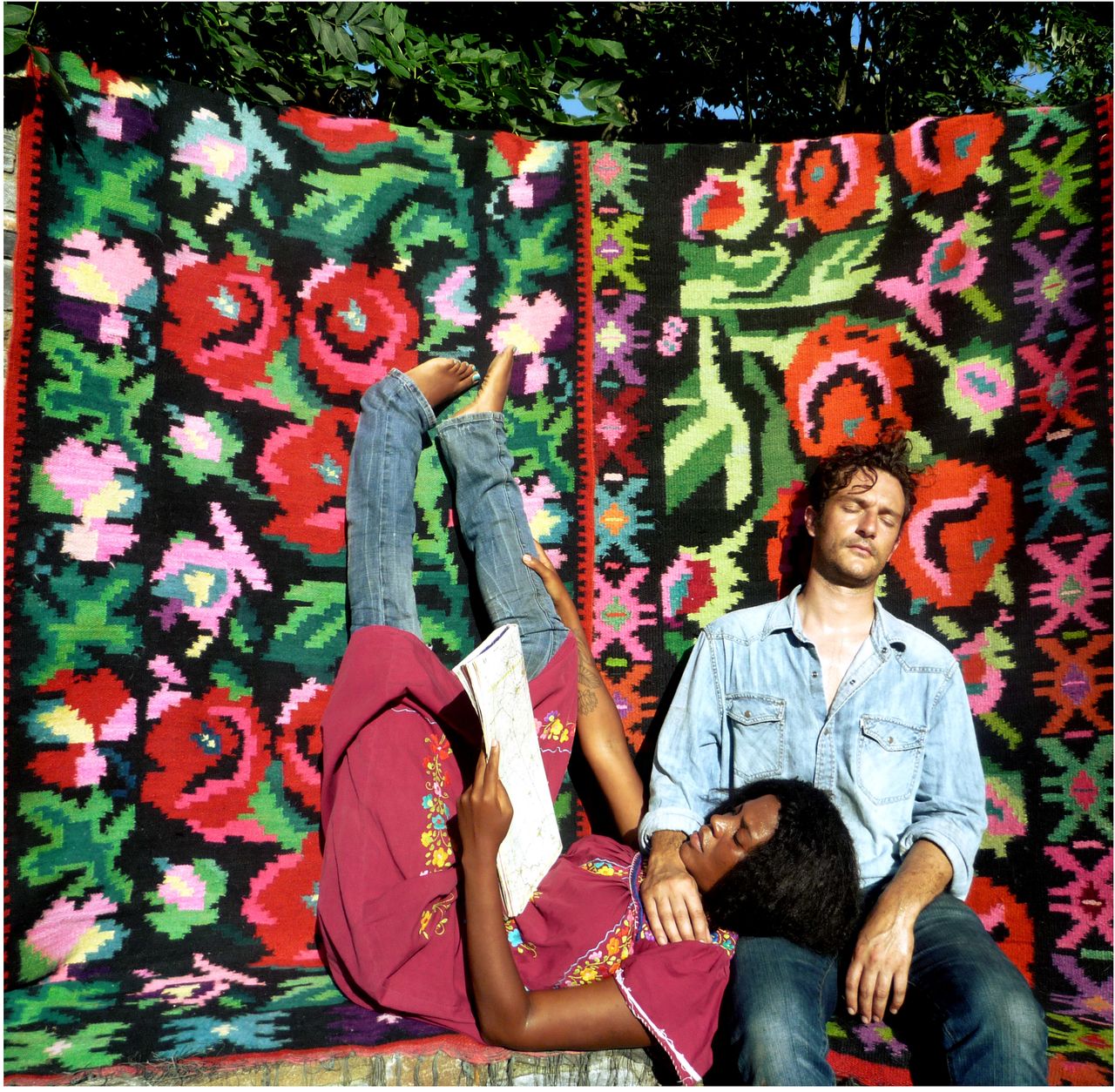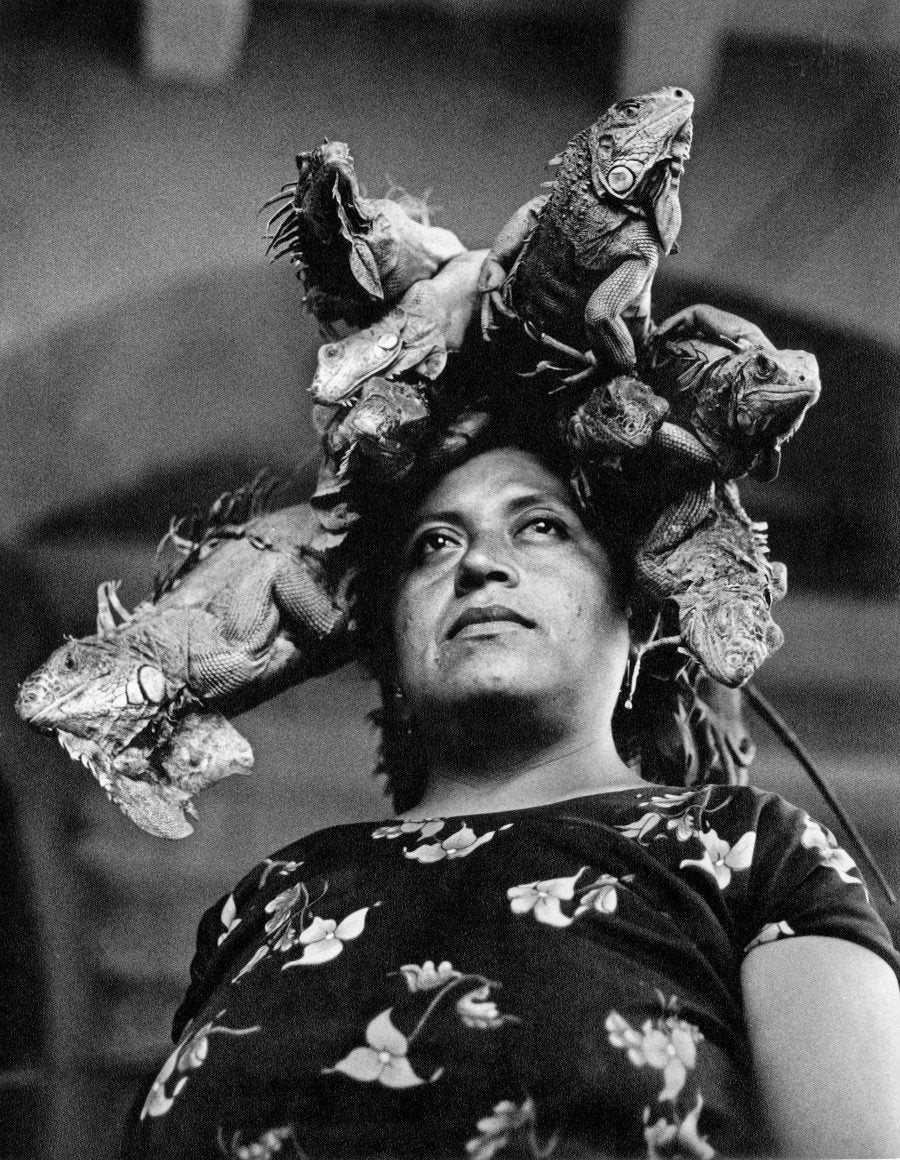Xaviera Simmons is the quintessential 21st-century artist.
The New York-based maker of photographs, performance art, videos, sculpture, sound installations has shown her work at places like the Museum of Modern Art, the Guggenheim, and the Studio Museum in Harlem. While her projects do not necessarily share any visual similarities à la painters of yore, Simmons uses her art to build a different kind of body of work. She uses her art to mine history, question contemporary culture, and push the boundaries of expression today.
From "Archive As Impetus," a 2013 project commissioned by MoMA that explored the political power of the archives, focusing in part on women and queer artists like Félix González-Torres, David Wojnarowicz and General Idea; to her work with Cecilia Alamani, curator of The High Line, on a project dubbed "Pier 54," examining the history of the piers and the site's relationship to gay male culture in New York City; to the writing she produced for fellow artist Carlos Motta, in the form on an article for the journal We Who Feel Differently, exploring the conversations we have about HIV/AIDS in the 21st century -- Simmons is part historian, part activist, part performer, who's often found herself attracted to the intricacies of queer history in the United States.
Most recently, Simmons has joined forces with an NYC-based performance space, The Kitchen, on a project titled "CODED," which, in typical Simmons style, blends bits of photography, art history and movement to talk about the ways we view gender and sexuality today. More specifically, she wants to investigate how the postures and poses associated with everything from famous paintings to Jamaican dancehall moves have influenced the ways we perceive and construct gender in the 21st century, and how sex and sensuality plays a separate but important role in the process.
The project -- currently raising funds on Kickstarter -- will take the form of a performance, inspired by familiar paintings, photographs and subcultures. While the artist was reluctant to divulge too much information about the site-specific performance (a few spoilers ahead!), Simmons was happy to talk to The Huffington Post about how she views the roles of art, gender and sex today.

Why did you decide to make "CODED"? Was there something about the way we engage with sexuality and gender today that motivated this project?
While I produce many different types of works with themes as varied as discussions of landscape and migration to the formal qualities of photography in relationship to film, text and sculpture, sexuality and gender are themes that have actually run throughout my entire practice. In brief terms, I am often frustrated at the lack of sensuality and sexuality I see in major museums and art galleries. The work that's made today often has a non-sexual existence. It's almost as if we forget that we can work within these topics as well as a host of other themes.
I make work that I want to see. Often there is an engagement with the body and the figure and how figures relate to each other and how figures relate to being seen when performing. I wanted to produce a work that was alive and breathing and one that tantalizes the audience a bit. I will never understand why I as a heterosexual woman would not engage in topics that might be queer and homoerotic in their inspiration. Through my practice and especially with "CODED" I want to enrich the language around the possibilities of looking, and find pleasure in bodies living and working through various poses.
Why the name "CODED" for this project?
The name "CODED" came out of a discussion I had with Matthew Lyons who is a curator at The Kitchen here in New York City. We were discussing the underlying themes of the performance as well as some of the art historical painting and photographic references that I am using to make the work. We realized that the themes I am really working with are, in relationship to the mainstream, often seen as "subcultures" with underground codes of conduct. Also, the performance itself is meant to be seen via varying layers of theme and sexuality. The poses, gestures and movements that I am working with are coded in our cultural body and our cultural memory.

You mention on Kickstarter that the piece is inspired by archival images of constructed masculinity and femininity, and you also mention images of queer gestures in painting, photography and dancehall culture. What are specific examples of this kind of imagery, whether from art history or pop culture?
I would rather not say specifically which images because that revelation is within the piece, which I hope people will be intrigued to come and see. But I will say that most of the images were produced by gay male and queer artists. Their poses and images have become the foundation and inspiration with how I work with the bodies I am choreographing.
Art history is so rich with images of men looking at men, men admiring the male form, and men offering up their sensuality for the viewer. I am simply taking those observations and offerings and then teasing them out to lay them on female bodies in motion. I am also looking at another subculture and sensuality that is Jamaican dancehall. The gestures found in photographs of that movement are extremely sensual and sexual and that language is found in public spaces. Where the homoerotic images that I reference are found in mostly constructed painterly and photographic spaces, the images of sensuality and sexuality from Jamaica are street-bound. I am looking at both of these and bringing them together.
Lately, when I walk into an art gallery or museum, I am always so struck at the lack of overt sensuality and sexuality in most works. Yes, we live in a politically charged time and yes, we live in brutal times in general. But we also live in human bodies that breathe and feel and in those bodies a multitude of senses are experienced. Some of which are pleasure. My practice at some level has always involved the pleasure of looking. Making work that I hope helps others to experiencing the sheer secrets of sensual pleasure.

How did you go about translating still images into movements for your work?
I trained as an actor 10 years ago and in that training you learn movement, how to work with the body as a tool, and how to have freedom and control with the body. I grew up dancing and I was a DJ for a very long time working with vinyl records, so rhythm and music are deep inside of me. It's only natural that these things come out in movement and performance-based forms.
Because I produce still images I understand that still images come from life and life is lived in movement. Pedestrian gestures can and often form the foundations of a movement-based work. I constantly think about taking the idea of still images and moving them into a performance space. I am a director and actor, so of course movement is just a natural progression.
Were you influenced by any dance traditions or performance styles in particular?
I admire dance so much and some of my favorite moments of looking have happened while looking at bodies in motion. Merce Cunningham, Pina Bausch, Yvonne Rainer and Trajal Harrell are just the tip of the iceberg when it comes to my love of practitioners of movement and dance. But I like to give them acknowledgment straight away. I also look to sculpture and natural forms as inspiration in terms of movement.
I am naive when it comes to working with movement in this way but I have to try and make sense of the impetus to look and produce as ideas come to me. At best, I am a performer and director. I suppose I would never call myself a choreographer. I am simply working with bodies and themes and using movement to carry out those themes.

How do you hope the audience engages with the project?
I hope that the audience, while they are experiencing the work, breathes more and literally experiences their breath at a slower pace while watching the work. I also hope that they think about sensuality and sexuality more and how it lands on their own bodies. I hope that the audiences is turned on, at least more turned on then they were before they came into the space. I want the audience to tap into aspects of their own desire as well as think about how bodies -- male-to-male and female-to-female and everything in between -- live together on the surface level of day-to-day activities, but also on the deeper levels of how these bodies, these same genders, connect on a sensual and political level.
Why exactly do you think, as you stated on Kickstarter, "art-making compels us to see the world as fertile ground for experimentation"?
I believe that good art-making helps us to see the world differently. We should come out of looking at a work a little changed in some way. Work that affects us on some level is the kind of work that I am interested in making. I hope to produce works that help people have even the smallest shift in perception and vision.

You also note on Kickstarter that "CODED" will work as a platform to hold workshops that engage youth locally and abroad through on site conversations and social media. Can you elaborate on this?
Most certainly. I will have workshops with students locally to share our creative process with them. I want students to have an insider's perspective of how an artist makes a new work; from deciding on a topic matter to fundraising and collaborating with a team. I want to offer students methods of understanding, how to work within a team structure that includes performers, producers and technicians. I want to offer conversations on gender that specifically speak to ways of looking and moving beyond the heteronormative conversation that prevails in our society today. I want to ask how can we encourage youth to look not only practically but also with all of the senses and through a political gaze.
Performances of "CODED" will take place between June 22 and July 30, 2016, at The Kitchen in New York City.


